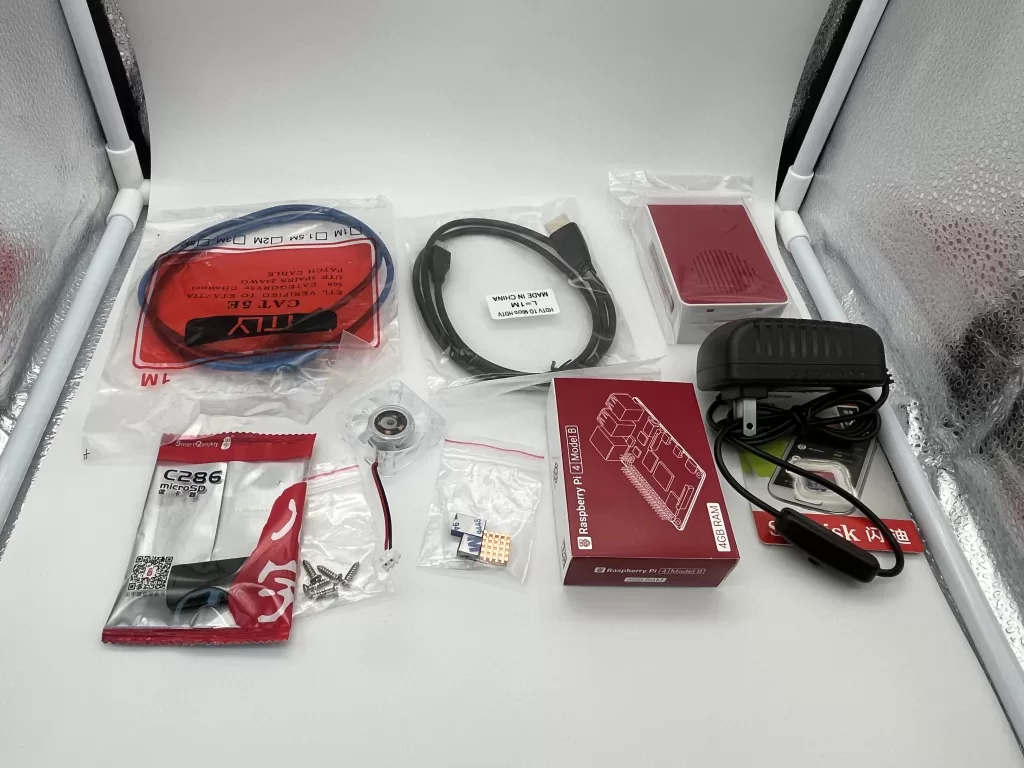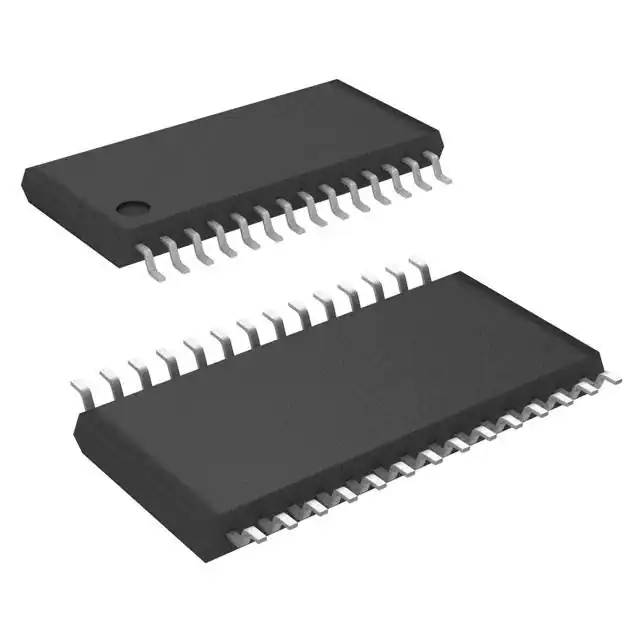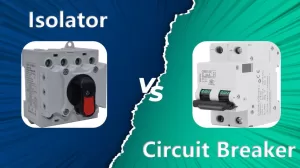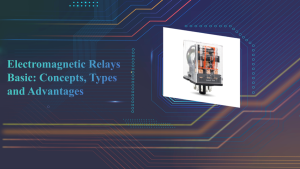In many electrical systems, including air conditioners, AC capacitors are a crucial component. They are essential in maintaining voltage stability ...
View detailsUnderstanding Ethernet Cables: Basics, Working Principle and Applications
In this blog, the basics and applications for an ethernet cable will be discussed.
What is An Ethernet Cable?

An Ethernet cable is a type of network cable used to connect devices, such as computers, routers, and switches, to a local area network (LAN) or the internet. It is the most common type of wired network connection and is widely used in both residential and commercial settings. Ethernet cables are designed to transmit data at high speeds and are essential for establishing reliable and stable network connections.
These cables typically consist of twisted pairs of copper wires encased in a protective outer sheath. The twisting of the wire pairs helps to reduce electromagnetic interference and crosstalk, which can degrade the quality of the signal. The most common type of Ethernet cable is the Category 5e (Cat 5e) cable, which supports data transfer speeds of up to 1 gigabit per second (Gbps). There are also higher categories such as Cat 6, Cat 6a, and Cat 7, which support even faster data transfer rates and better shielding against interference.
Ethernet cables use a modular connector called an RJ45 connector, which resembles a larger version of a telephone connector. These connectors are used to plug the cable into Ethernet ports on devices such as computers, routers, and network switches. The cables are available in various lengths, ranging from a few feet to hundreds of feet, allowing for flexibility in network setup and organization.
In addition to providing high-speed data transmission, Ethernet cables can also supply power to devices through Power over Ethernet (PoE) technology. This feature is commonly used to power devices such as wireless access points, IP cameras, and VoIP phones, eliminating the need for separate power cables and adapters.
Overall, Ethernet cables are a fundamental component of modern networking infrastructure, offering reliable and high-speed connectivity for a wide range of devices and applications. Their versatility, durability, and cost-effectiveness make them an essential tool for establishing and maintaining wired network connections in both home and business environments.
Types of Ethernet Cables
There are several types of Ethernet cables, each designed for specific networking requirements and data transmission speeds. The most common types include Cat 5e, Cat 6, Cat 6a, and Cat 7 cables, each offering different performance characteristics to meet the demands of modern networking applications.
Cat 5e (Category 5e) cables are among the most widely used Ethernet cables. They are capable of supporting data transfer speeds of up to 1 gigabit per second (Gbps) and are suitable for most residential and small business networking needs. Cat 5e cables are relatively affordable and provide reliable performance for everyday internet use, file sharing, and media streaming.
Cat 6 (Category 6) cables are an enhanced version of Cat 5e cables, offering improved performance and faster data transmission speeds. They are designed to support data rates of up to 10 Gbps over short distances, making them ideal for high-speed networking in larger homes, businesses, and data centers. Cat 6 cables are constructed with tighter twists in the wire pairs and better insulation, reducing crosstalk and interference for more reliable data transmission.
Cat 6a (Category 6a) cables are an advancement over Cat 6 cables, providing even higher data transfer speeds and better noise reduction. They are capable of supporting data rates of up to 10 Gbps over longer distances, making them suitable for demanding applications such as high-definition video streaming, large file transfers, and high-performance computing environments. Cat 6a cables are often used in enterprise networks and data centers where high-speed, reliable connectivity is essential.
Cat 7 (Category 7) cables represent the latest standard in Ethernet cable technology, offering superior performance and shielding capabilities. They are designed to support data rates of up to 10 Gbps over 100 meters of copper cabling, making them well-suited for high-speed networking in commercial and industrial settings. Cat 7 cables feature individually shielded wire pairs and overall shielding to minimize electromagnetic interference and ensure optimal signal quality.
In addition to these standard categories, there are also variations such as Cat 5e STP (shielded twisted pair) and Cat 6 FTP (foiled twisted pair) cables, which provide additional protection against electromagnetic interference. Understanding the differences between these Ethernet cable types is crucial for selecting the right cable to meet specific networking needs and performance requirements.

Ethernet Cables vs. Fiber Optic
Ethernet cables and fiber optic cables are two primary types of networking cables used to transmit data within a network. Each has its own advantages and is suited for different applications based on factors such as distance, speed, and environmental considerations.
Ethernet cables, also known as twisted pair cables, use copper wires to transmit data. They are widely used for local area networks (LANs) and are relatively inexpensive and easy to install. Ethernet cables come in various categories, such as Cat 5e, Cat 6, Cat 6a, and Cat 7, each offering different data transmission speeds and performance characteristics. They are suitable for connecting devices within a building or a local area, and they can support data rates of up to 10 Gbps over short to moderate distances.
On the other hand, fiber optic cables use thin strands of glass or plastic to transmit data using light signals. Fiber optic cables offer several advantages over Ethernet cables, including much higher data transmission speeds, greater bandwidth, and immunity to electromagnetic interference. They are ideal for long-distance transmissions, such as those between buildings or across large campuses, and they can support data rates of up to 100 Gbps or more over much longer distances than copper cables.
Fiber optic cables are also more secure and less susceptible to signal degradation over long distances, making them suitable for high-security applications and environments with electromagnetic interference, such as near heavy machinery or power lines. However, fiber optic cables are generally more expensive and require specialized equipment for installation and maintenance.
In summary, Ethernet cables are well-suited for local and short-distance networking needs, offering cost-effective solutions for connecting devices within a building or a local area. Fiber optic cables, on the other hand, excel in long-distance, high-speed, and high-security applications, making them the preferred choice for interconnecting buildings, data centers, and other locations where high-speed, reliable data transmission is essential. The choice between Ethernet and fiber optic cables depends on the specific requirements of the network, including distance, speed, budget, and environmental factors.
How Ethernet Cables Work?
Ethernet cables work by transmitting data using electrical signals over twisted pairs of copper wires. When a device, such as a computer or a router, sends data, the electrical signals are converted into binary code (0s and 1s) and transmitted through the Ethernet cable to the receiving device. The twisted pairs of wires in the cable help to reduce electromagnetic interference and crosstalk, ensuring that the data signals arrive at their destination with minimal degradation.
At each end of an Ethernet cable is a modular connector called an RJ45 connector, which is used to plug the cable into Ethernet ports on devices. These connectors have eight pins that correspond to the eight wires within the cable, allowing for the transmission of data in both directions. When the cable is plugged in, the pins make contact with the corresponding pins in the Ethernet port, establishing a connection that enables data transmission between the connected devices.
Ethernet cables use a protocol known as Carrier Sense Multiple Access with Collision Detection (CSMA/CD) to manage data transmission. This protocol allows devices on the network to listen for a clear channel before transmitting data. If two devices attempt to transmit data simultaneously and a collision occurs, they will wait for a random amount of time before attempting to retransmit, reducing the likelihood of further collisions.
The data transmitted over Ethernet cables is organized into packets, which contain the actual data being sent, along with addressing and control information. These packets are transmitted through the cable and received by the destination device, which then processes the data and responds as necessary.
Ethernet cables can also support Power over Ethernet (PoE) technology, which allows electrical power to be transmitted over the same cable used for data transmission. This feature is commonly used to power devices such as wireless access points, IP cameras, and VoIP phones, simplifying the installation and management of network-connected devices.
Overall, Ethernet cables provide a reliable and cost-effective means of transmitting data within a local area network (LAN) or connecting devices to the internet. Their simple yet effective design, combined with the widespread support for Ethernet networking in devices and infrastructure, makes them a fundamental component of modern networking technology.
Applications for Ethernet Cables
Ethernet cables have a wide range of applications across various industries and environments, thanks to their reliability, cost-effectiveness, and ability to provide high-speed data transmission. Some of the key applications for Ethernet cables include:
- Local Area Networks (LANs): Ethernet cables are commonly used to connect devices within a local area network, such as computers, printers, servers, and network switches. In office buildings, schools, and homes, Ethernet cables form the backbone of the network infrastructure, enabling devices to communicate and share resources.
- Internet Connectivity: Ethernet cables are used to connect modems, routers, and other networking equipment to internet service providers (ISPs). Whether in residential homes or commercial settings, Ethernet cables provide a stable and high-speed connection to the internet, supporting activities such as web browsing, video streaming, online gaming, and more.
- Data Centers: In large-scale data centers, where vast amounts of data are processed and stored, Ethernet cables are used to interconnect servers, storage devices, and networking equipment. High-speed Ethernet connections are essential for maintaining the performance and reliability of data center operations.
- Voice over IP (VoIP) Telephony: Ethernet cables are used to connect VoIP phones to the network, enabling voice communication over the internet. This application leverages the reliability and quality of Ethernet connections to deliver clear and consistent voice communication for businesses and organizations.
- IP Security Cameras: Many surveillance systems utilize Ethernet cables to connect IP cameras to the network. This allows for the transmission of high-quality video footage and enables remote monitoring and recording of security camera feeds.
- Wireless Access Points: Ethernet cables are used to connect wireless access points to the network, providing internet connectivity to wireless devices such as smartphones, tablets, and laptops. This infrastructure is essential for creating reliable and high-speed wireless networks in homes, offices, and public spaces.
- Industrial Automation: In industrial environments, Ethernet cables are used to connect programmable logic controllers (PLCs), sensors, and other automation devices to the network. Ethernet-based industrial networks enable real-time monitoring and control of manufacturing processes and equipment.
- Audio-Visual Systems: Ethernet cables are increasingly used in audio-visual installations to transmit high-definition video and audio signals. This includes applications such as digital signage, video conferencing systems, and multimedia presentations in commercial and educational settings.
Overall, Ethernet cables play a crucial role in enabling reliable and high-speed data connectivity across a wide range of applications, from everyday networking in homes and offices to complex industrial and commercial environments. Their versatility and performance make them an essential component of modern networking infrastructure.
Conclusion
In conclusion, Ethernet cables are the backbone of modern networking, providing reliable and high-speed connectivity for a wide range of applications. From local area networks and internet connectivity to data centers and industrial automation, Ethernet cables play a crucial role in enabling seamless communication and data transmission. Their cost-effectiveness, versatility, and ability to support Power over Ethernet (PoE) make them an essential component of networking infrastructure in both residential and commercial settings. Understanding the different types and applications of Ethernet cables is key to building efficient and robust network systems in today's interconnected world.
Becky
Becky is a technical writer who are interested in writing some professional and original articles. She spent some time working in some electronic sector, but her main area of interest is the use of AI in edge computing. The rest of the time, she write or program about technology-related articles pertaining to the Internet of Things, GPU computing, LoraWAN, PCB, Machine Learning, Precision Agriculture, Open Electronics, and similar areas.
WEW ALL POSTS BYBecky-
Unveiling AC Capacitor: What is an AC Capacitor and How Does It Work? 315
-
Understanding Strain Gauges: A Beginner’s Guide 24
In this blog, we will delve into the fascinating world of strain gauges, exploring their purpose, working principles, applications, and how to use ...
View details -
Installing the Nest Power Connector: A Foolproof Guide 488
The Nest Power Connector is a simple and affordable device that can help you get the most out of your Nest thermostat. Even in cases when Nest ther...
View details -
Isolator vs Circuit Breaker: What’s difference between them? 393
A crucial distinction exists between isolators and circuit breakers: isolators are used to isolate equipment from the power source, whereas circuit...
View details -
Electromagnetic Relays Basics: Concepts, Types and Advantages 567
In this blog, we will explore the basics of electromagnetic relays including their concepts, types, and advantages so that readers will foster a de...
View details -
Understanding Transient Voltage Surge Suppressors 138
In this blog, we will delve into Transient Voltage Surge Suppressor (TVSS). Whether you have a home theater setup or simply a laptop you rely on, u...
View details
 Ampheo Electronics
Ampheo Electronics






